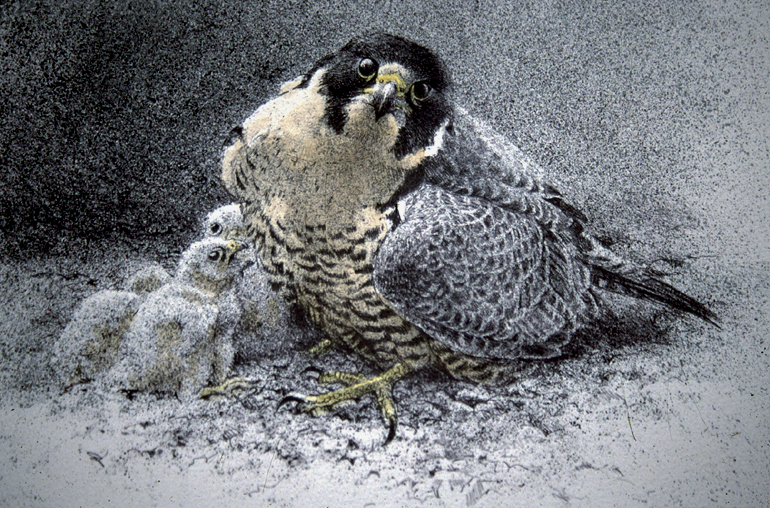
One of the great success stories of the conservation movement of recent decades is the re-establishment of the peregrine falcon to many areas of its former range. Most people know about the landmark book by Rachel Carson, Silent Spring (Houghton Mifflin, 1962), in which she warned of the dangers to our wildlife and, indeed, ourselves from pesticides and other industrial chemicals that were making their way into the environment since World War II.
There was great enthusiasm at the time for "better living through chemistry" until we discovered the serious implications for all living things. The peregrine falcon and bald eagle were among the first marker species -- "the canaries in the coal mine" -- so to speak. Where agricultural chemicals were sprayed, populations of those two birds and other species plummeted. In fact, the peregrine falcon became extinct throughout of its former range. Now that DDT has been banned, it is possible to reintroduce viable populations. To our delight, it was discovered that peregrine falcons would accept high rise buildings as alternative "cliff" nesting sites. The urban population of pigeons has provided an ample food source.
This female is on her nest near the top of a high rise apartment building in Milwaukee. As in most of the other breeding and reintroduction programmes, she is being carefully protected and monitored by the Wisconsin Peregrine Falcon Recovery Team. It was wonderful that through the work of these dedicated people we can now see this magnificent predator winging wild and free.